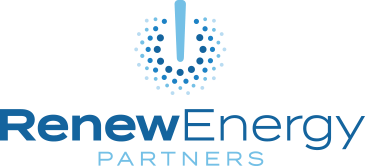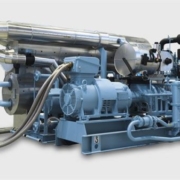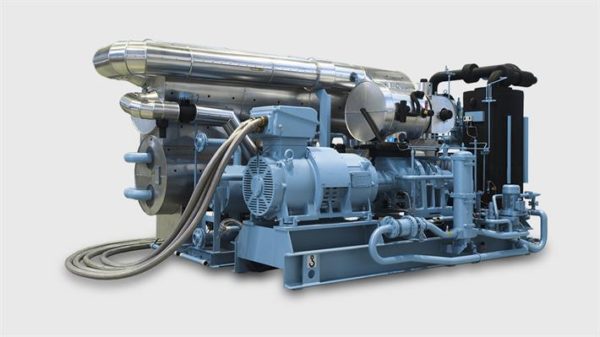Water Saving Retrofits
RENEW Energy partners specializes in helping fund energy saving retrofits for your commercial, industrial, and institutional buildings. There are many different technologies we can install to make your buildings more efficient and reduce your energy bill. One place to deliver significant savings is by reducing your water consumption with a water saving retrofit.
Water Saving Retrofits
Water savings are a very beneficial by-product of energy saving projects, but not always the initial driver of a new project. Typically, when we talk about saving water, we are really talking about saving the energy required to pump, purify, and/or heat water. In an energy saving retrofit, you want to eliminate places where you’re wasting water for the same reason’s you want to improve efficiency of any energy systems–to reduce the energy usage. Except for fixing a large leak, water saving retrofits are always going to be grouped together with controls or another efficiency improvement in order to decarbonize most effectively.
The Basics
Opportunities for water savings can be found in three places: plumbing fixtures, irrigation, and HVAC equipment.
As with any retrofit it is important to meter your consumption before planning a project. Water submeters can help break down your building’s usage in more detail than your utility bills, and in complex systems submeters can help identify sources of waste that would otherwise go unnoticed.
Water efficiency is one of the easiest and most measurable energy saving retrofits because it typically involves one-to-one fixture or appliance replacements.
It is important to remember that while simple upgrades are simple to implement, more complicated upgrades require knowledge of the water codes in your building’s jurisdiction.
Plumbing
Common plumbing retrofits include low-flow urinals and toilets, which can provide significant water savings. Both urinals and toilet upgrades will require the upfront cost of flush valve and china replacement. Additional modifications to the piping in the plumbing chase or below the flow may be required as well.
To provide low-flow lavatory and shower upgrades, it is important to review all water distribution systems. Oversized pipes and the location of the fixture compared to the heating source can increase the amount of energy your system needs to heat water. Adjusting the locations of these features and sizing piping diameter correctly can reduce that energy spend. Additionally, ensuring that hot water recirculation loops are sufficiently insulated is a critical part of reducing domestic water costs.
Irrigation
If irrigation is your biggest energy spend, upgrading controls should be a priority. Irrigation controls can help you monitor consumption in real time, as well as more accurately deliver water where it’s needed. Delivering the right amount of water at the right time is the key to efficient irrigation.
HVAC
You can learn more about the history, basics, and future of HVAC retrofits in our previous blog posts here.
Besides decreasing carbon fuel usage, major water reductions are often a great side effect of upgrading an outdated heating system. In particular, transitioning away from steam heating can yield both huge water and energy savings. If eliminating steam is not an option, upgrading and replacing steam traps or condensate return systems can still have major impacts in a large system.
Additional Water Conservation Methods
Beyond the basics, retrofits can include more specialized technology such as dishwasher and garbage disposal replacement for buildings that have kitchens and food waste. More efficient closed loop dishwashers can use significantly less water and energy than older steam driven ones, providing plenty of energy savings.
Water controls are also a crucial element in sustainability projects. Smart water meters deliver consumption and temperature data in real time in order to educate building owners and provide the opportunity for long-term behavioral changes. Smart leak detection technology, as well as humidity detectors, can easily detect leaks that need to be addressed in a retrofit. In addition, they send out alerts as soon as a new leak happens, thus preventing more damage from occurring and minimizing maintenance costs. Water control technologies can deliver significant savings for customers and new products are continuing to be developed and introduced to the market.
Other campus water improvements can include leak monitoring as well as replacing any grass lawns with drought-tolerant or native landscaping.
Conclusion
By pairing water savings with a larger energy saving retrofit, you can simultaneously decarbonize and reduce your energy bills. When paired with buildings controls, clients can monitor their water use and identify maintenance issues in real time.
Reducing your buildings water demand will also benefit your greater community by reducing demand on communal water infrastructure.
No matter how you decide to improve your water system, energy savings retrofits projects require funding. In order to fund an energy saving retrofit for your building(s), RENEW Energy Partners offers our own energy service agreement (ESA). The Energy Service Agreement:
- Can be treated as an off-balance sheet transaction. You do not own the asset or carry it on your balance sheet. (You will consult with your accountant on this).
- RENEW provides preventive and corrective maintenance in the service agreement.
- Your payment to RENEW will be based on the energy savings confirmed once the system is operational.
Unlike a lease or a loan, which are on balance sheet, do not include maintenance, and may or may not deliver energy savings, the service agreement provides all of the above and then some:
- Executing a service agreement is fast – once the project is scoped by an energy professional (and we can recommend one), you execute a simple service agreement contract and RENEW will fund the project.
- Executing a service agreement frees up your capital budget for your other priorities, allowing you to focus on growing your core business.
- Executing a service agreement now means your net cash flows are higher than waiting and doing it yourself in a year.
- And finally – executing a service agreement means flexibility. Perhaps you buy another building or look at additional efficiency measures–with a one-page addendum to your existing ESA you can have those new lights, HVAC, plumbing, and controls at your new building, and you simultaneously reduce your operating expense!
The RENEW Energy Service Agreement allows businesses to focus on what they do best, while ensuring that their facilities are performing at their peak with brand new, and high-efficiency equipment. In this current climate of cost control and resource allocation, the energy service agreement is the perfect solution to help businesses meet sustainability goals and keep facilities in top condition. Reach out to RENEW and talk to us about funding your energy saving retrofits today.



